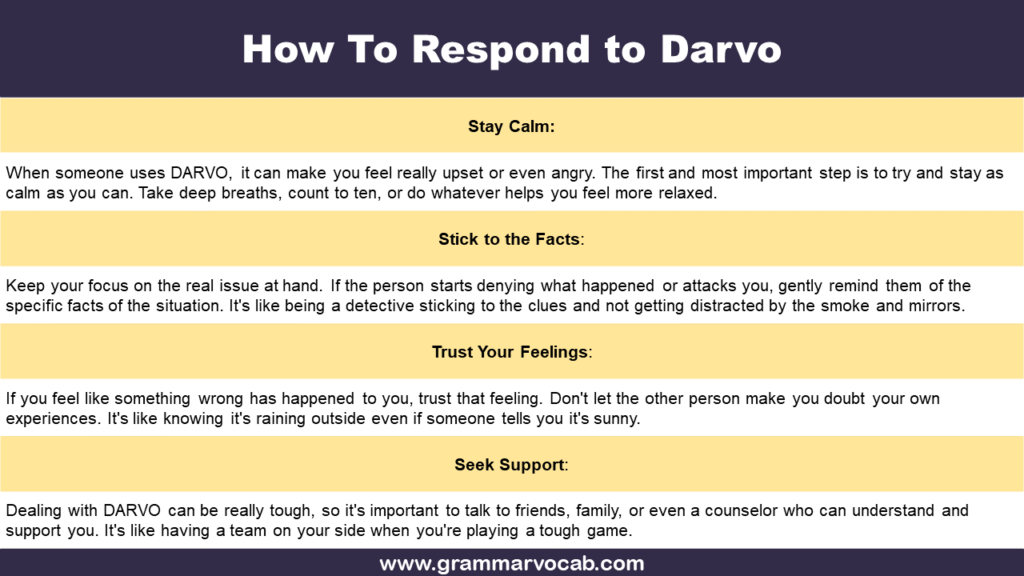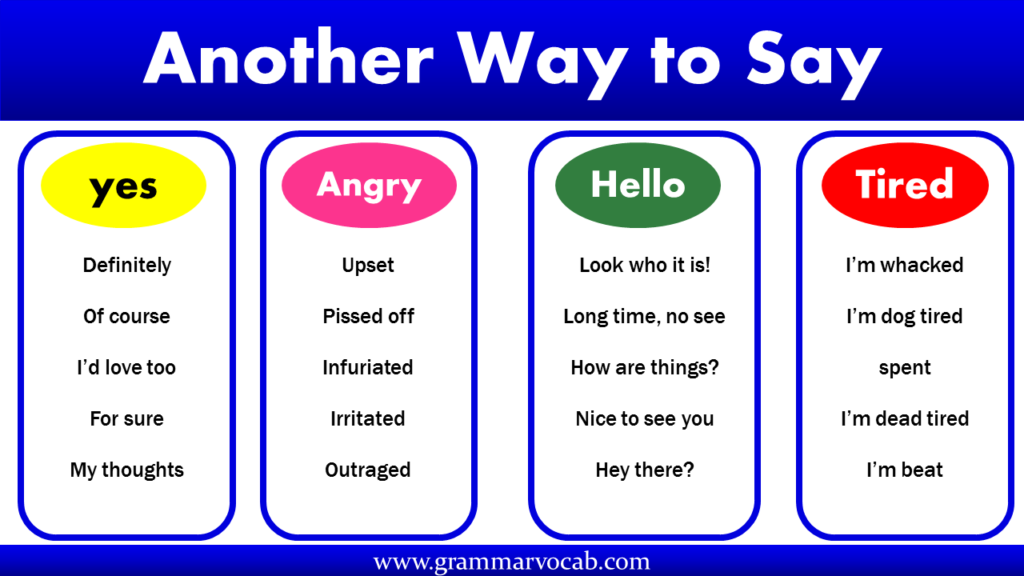Have you ever found yourself in a situation where someone did something wrong to you, but when you tried to talk about it, they turned the tables and made it seem like you were the bad guy? This confusing and unfair situation is known as DARVO, which stands for Deny, Attack, and Reverse Victim and Offender. It’s like a magic trick where the person who did something wrong tries to make themselves look like the victim and you, the real victim, look like you’re the one at fault. This can be really upsetting and confusing, but don’t worry. Am here to help you.
Ways To Respond to Darvo
Here are some simple steps you can take to handle such situations:
Stay Calm:
When someone uses DARVO, it can make you feel really upset or even angry. The first and most important step is to try and stay as calm as you can. Take deep breaths, count to ten, or do whatever helps you feel more relaxed.
Stick to the Facts:
Keep your focus on the real issue at hand. If the person starts denying what happened or attacks you, gently remind them of the specific facts of the situation. It’s like being a detective sticking to the clues and not getting distracted by the smoke and mirrors.
Trust Your Feelings:
If you feel like something wrong has happened to you, trust that feeling. Don’t let the other person make you doubt your own experiences. It’s like knowing it’s raining outside even if someone tells you it’s sunny.
Seek Support:
Dealing with DARVO can be really tough, so it’s important to talk to friends, family, or even a counselor who can understand and support you. It’s like having a team on your side when you’re playing a tough game.
Set Boundaries:
Let the other person know what behavior is not okay with you and stick to it. If they continue to use DARVO, you might need to decide how much you want this person in your life. It’s like deciding who gets to be on your personal team.
Know When to Walk Away:
Sometimes, despite your best efforts, the person using DARVO may not change their behavior. It’s important to know when to walk away from a conversation or relationship that’s harmful to you. Your well-being is important, and there are times when the healthiest option is to remove yourself from the situation.
Avoid Public Confrontations:
Public confrontations can escalate the situation and make things worse. If you need to discuss the issue, try to do it privately. This can prevent the conversation from becoming a spectacle and may lead to a more constructive discussion.
Document Everything:
Keep a record of any interactions that involve DARVO, including dates, times, and what was said. This can be really helpful, especially if you need to explain the situation to someone else, like a teacher or a boss. It’s like keeping a diary of events so you have the story straight.
Take Care of Yourself:
Going through a DARVO situation can be really draining. Make sure you’re taking time to do things that make you feel good, whether that’s hanging out with friends, going for a walk, or watching your favorite movie. It’s like charging your personal batteries so you’re ready for anything.
Dealing with DARVO can be deeply distressing and disorienting. It’s important to take care of yourself and seek the appropriate support and resources to navigate these situations.
Must Try: How To Respond to Wsg (What’s Good)



